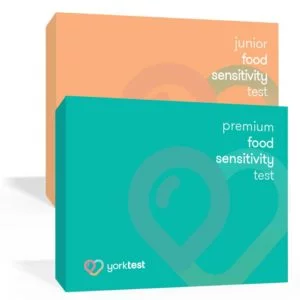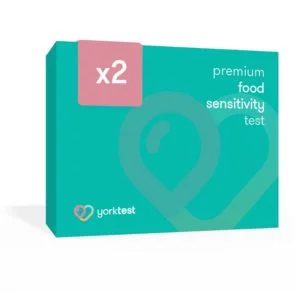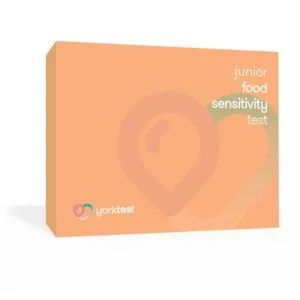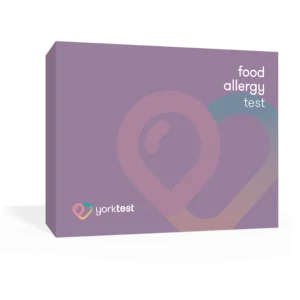- Do You Have a Chickpea Allergy or Intolerance?
- Defining a Chickpea Allergy
- Understanding Chickpea Intolerance
- Is Chickpea Allergy Common?
- Cross-Reactivity with Other Legume Allergies
- Symptoms of Chickpea Allergy
- Oral and Respiratory Symptoms
- Skin Reactions
- Gastrointestinal Issues
- Severe Symptoms
- Chickpea Intolerance Symptoms
- Primary Digestive Symptoms
- Other Common Symptoms
- FODMAP Connection
- What Foods to Avoid with Chickpea Sensitivity
- Chickpea Allergy Treatment Options
- Determine Your Condition with a Chickpea Allergy Test Kit
Updated for 2025: Chickpeas, also known as Garbanzo beans, are a pulse with a rich historical legacy spanning over 7,000 years, making them one of the world’s earliest cultivated foods. These versatile legumes feature prominently in diverse cuisines, particularly in South and East European, Northern African, Middle-Eastern, and Asian cooking. In Western countries, they’re most commonly recognized as the primary ingredients in popular dishes like hummus and falafel.
With their impressive nutritional profile featuring high protein and fiber content while maintaining low fat levels, chickpeas have become increasingly popular as a healthy dietary staple. This trend has accelerated with the rise of plant-based diets, where chickpeas often serve as a meat alternative.
However, this widespread consumption has revealed a concerning pattern: many individuals experience adverse reactions to chickpeas. These reactions can manifest in two distinct ways – as a true allergy or as a food intolerance. The distinction is crucial, as chickpea allergies can trigger IgE-mediated immune responses ranging from mild symptoms to severe anaphylaxis. Research has shown that chickpea allergies are particularly prevalent in specific geographic regions, with studies indicating significant rates of allergic reactions in populations where chickpeas are dietary staples.[1]
What complicates matters further is that chickpea reactions often occur alongside sensitivities to other legumes, particularly lentils and peas. Recent immunological studies have revealed that chickpea allergy might actually be an expression of cross-reactivity, frequently caused by primary allergies to soy, peas, or lentils.[2] This interconnected nature of legume sensitivities makes it essential to understand the specific nature of one’s reaction to chickpeas, whether it’s a true allergy requiring strict avoidance or an intolerance that might be managed through dietary modifications.
Do You Have a Chickpea Allergy or Intolerance?
Recognizing whether you have a chickpea allergy or intolerance is vital, as these conditions differ significantly in their mechanisms, severity, and treatment approaches.
Defining a Chickpea Allergy
A chickpea allergy involves an immune system IgE response where the body mistakenly identifies specific chickpea proteins as harmful invaders. The immune system produces IgE antibodies that trigger the release of histamine, leading to allergic symptoms. Key characteristics include:
- Rapid onset of symptoms, usually within minutes to hours after consumption
- Symptoms affecting multiple body systems
- Potential for severe reactions, including anaphylaxis in rare cases
- Consistent reactions even to small amounts of chickpeas
Understanding Chickpea Intolerance
Chickpea intolerance, in contrast, may or may not involve the immune system. It reflects the body’s difficulty properly digesting or metabolizing chickpeas. Distinctive features include:
- Delayed symptom onset, often several hours after consumption
- Symptoms primarily affecting the digestive system
- No risk of anaphylaxis
- Symptoms may vary based on the amount consumed
The timing and nature of the symptoms are determining factors between chickpea allergy and an intolerance condition. Allergy symptoms appear quickly and can include hives, breathing difficulties, and swelling, whereas intolerance symptoms develop gradually and typically involve bloating, headaches, and digestive issues.
The best way to determine a condition is by taking a proper test. There are various testing methods, such as blood tests, skin prick tests, or food sensitivity testing, depending on whether an allergy or intolerance is suspected.
Is Chickpea Allergy Common?
Chickpea allergy prevalence varies significantly by region and dietary patterns. While not as common as peanut or soybean allergies, which are the most prevalent legume allergies worldwide, chickpea allergies present a notable concern in specific populations.
The condition is particularly prevalent in regions where chickpeas are dietary staples, especially in India and Mediterranean countries. This regional variation reflects the relationship between exposure and allergy development, with higher rates occurring in areas of greater consumption.
Research provides interesting insights into chickpea allergy patterns:
- In a comprehensive study of 1,400 patients, 142 reported food allergies, with 59 specifically implicating chickpeas. Of these, 41 showed positive skin tests, and 31 had confirmed chickpea allergies through controlled food challenges.[1]
- Among children with multiple food allergies, chickpea allergy appears in 28% of cases, ranking after lentils (66%) and peanuts (61%).
Cross-Reactivity with Other Legume Allergies
Chickpea allergies often occur alongside other legume sensitivities:
- All documented cases of chickpea allergy in one study showed multiple legume allergies
- 96% of chickpea-allergic individuals were also allergic to lentils
- 63% showed allergies to both peas and peanuts
- 58% demonstrated tree nut allergies
While chickpea allergy isn’t among the most common food allergies, its significance shouldn’t be underestimated, particularly given its potential to cause reactions ranging from mild symptoms to severe anaphylaxis.
Symptoms of Chickpea Allergy
A chickpea allergic reaction typically manifests within minutes to hours after consumption, affecting multiple body systems. The severity can range from mild discomfort to potentially life-threatening reactions.
Oral and Respiratory Symptoms
- Burning or tingling sensation in the mouth
- Difficulty swallowing
- Wheezing and shortness of breath
- Coughing and nasal congestion
Skin Reactions
- Hives (itchy, red, raised bumps)
- Skin redness and inflammation
- Itching without visible bumps
- Swelling of face, throat, or other body areas
Gastrointestinal Issues
- Nausea and vomiting
- Stomach cramps
- Diarrhea
- Abdominal pain
Severe Symptoms
In rare cases, chickpea allergies can trigger anaphylaxis, a severe allergic reaction characterized by:
- Difficulty breathing due to constricted airways
- Dizziness or lightheadedness
- Rapid pulse
- Sudden drop in blood pressure
It’s crucial to seek immediate medical attention if experiencing symptoms of anaphylaxis, as this condition can be life-threatening and requires urgent treatment.
Chickpea Intolerance Symptoms
Unlike an allergic reaction, chickpea intolerance can occur when the body exhibits an IgG immune response when digesting chickpeas. This condition develops more gradually than an allergic response.
Primary Digestive Symptoms
- Bloating and excessive gas
- Abdominal pain and cramping
- Diarrhea
- Nausea
Other Common Symptoms
- Headaches and migraines
- Fatigue and tiredness
- Skin issues like acne
- Mild respiratory symptoms such as a runny nose
FODMAP Connection
Chickpeas are high in FODMAPs (fermentable oligosaccharides), which can cause significant digestive issues. When these complex sugars reach the large intestine undigested, they ferment, leading to uncomfortable symptoms. This is particularly relevant for people with conditions like IBS. The key differences from chickpea allergy include:
- Symptoms typically appear several hours after consumption
- Reactions are dose-dependent, meaning larger portions cause stronger symptoms
- No risk of anaphylaxis or life-threatening reactions
- Symptoms mainly confined to digestive system and general wellbeing
People with certain digestive conditions may experience more severe intolerance symptoms. These conditions include IBS, Crohn’s disease, ulcerative colitis, and gastroesophageal reflux disease.
What Foods to Avoid with Chickpea Sensitivity
When managing chickpea sensitivity, it’s essential to be vigilant about both obvious and hidden sources of chickpeas in food products. The increasing popularity of chickpea-based ingredients in modern food manufacturing makes this particularly important.
- Traditional Mediterranean and Middle Eastern Foods: Hummus, falafel, and various stews form the cornerstone of these cuisines and consistently contain chickpeas as a primary ingredient.
- Gluten-free Products: Pasta, noodles, snacks, and baked goods often use chickpea flour (also known as gram flour or besan) as a gluten alternative due to its protein content and binding properties.
- Plant-based Protein Products: Vegetarian burgers, meat alternatives, and protein powders frequently incorporate chickpeas as a primary protein source, making them unsuitable for those with sensitivities.
- Modern Health Snacks: The rise of health-conscious snacking has led to numerous chickpea-based products, including roasted chickpea snacks, chips, and protein bars.
- Salad Bar Items: Many salad bars and prepared food sections include chickpeas, creating cross-contamination risks even in dishes that don’t typically contain them.
- Indian Cuisine: Numerous Indian dishes incorporate chickpeas or chickpea flour, from curry dishes to breaded items and desserts.
- Alternative Flours and Baking Mixes: Pancake mixes, waffle batters, and various baking blends may contain chickpea flour, especially those marketed as high-protein or gluten-free options.
- Restaurant Cross-contamination Risks: Establishments serving Mediterranean, Middle Eastern, or Indian cuisine pose particular risks due to shared cooking surfaces and utensils.
For those with severe allergies, it’s particularly important to be cautious with products labeled as “plant-based” or “high-protein,” as manufacturers increasingly use chickpeas as a protein source. Always check ingredient labels carefully, looking for alternative names such as garbanzo beans, gram flour, besan, or ceci beans.
Chickpea Allergy Treatment Options
Let’s face it – managing a chickpea allergy isn’t always easy, but it’s definitely doable with the right approach. The most important step? Simply avoiding chickpeas and foods that contain them. This means becoming a bit of a detective with food labels and having clear conversations with restaurants about your dietary needs.
When it comes to treating allergic reactions, your doctor will likely prescribe different medications based on your specific needs. For those with more severe allergies, carrying an epinephrine auto-injector is essential – think of it as your emergency backup plan.
Some exciting developments in allergy treatment are offering new hope. Oral immunotherapy is gaining traction as a promising option, where doctors carefully introduce tiny amounts of chickpea protein to help your body build tolerance over time. Another similar approach, sublingual immunotherapy, works by placing small doses under the tongue. While these treatments aren’t yet widespread, they’re showing encouraging results for some patients.
The key to successfully managing a chickpea allergy is having a solid plan in place. This means working closely with your allergist to develop a strategy that fits your lifestyle, knowing exactly what to do if a reaction occurs, and staying informed about your condition. While we can’t cure chickpea allergies just yet, these approaches can help you live confidently despite your allergy.
Determine Your Condition with a Chickpea Allergy Test Kit
If you suspect a chickpea allergy, immediate dietary elimination is essential, followed by consultation with an allergist for proper diagnosis. Home-to-laboratory testing kits can provide initial insights into potential reactions to chickpeas, though professional medical evaluation remains crucial. For those with intolerance, the approach may vary based on sensitivity levels – while some may need complete elimination, others might simply require reduced intake to manage symptoms.
Given the potential overlap between allergy and intolerance symptoms, comprehensive food sensitivity testing can help identify IgG antibody reactions in your blood, providing valuable insights into potential food intolerances. Understanding your specific reaction to chickpeas is crucial for developing an appropriate management strategy and ensuring long-term health and well-being. For questions or guidance, contact YorkTest.
Scientific References:
- Patil SP, Niphadkar PV, Bapat MM. Chickpea: a major food allergen in the Indian subcontinent and its clinical and immunochemical correlation. Ann Allergy Asthma Immunol. 2001 Aug;87(2):140-5. doi: 10.1016/S1081-1206(10)62209-0. PMID: 11527247.
- Bar-El Dadon S, Pascual CY, Reifen R. Food allergy and cross-reactivity-chickpea as a test case. Food Chem. 2014 Dec 15;165:483-8. doi: 10.1016/j.foodchem.2014.05.138. Epub 2014 Jun 4. PMID: 25038702.











